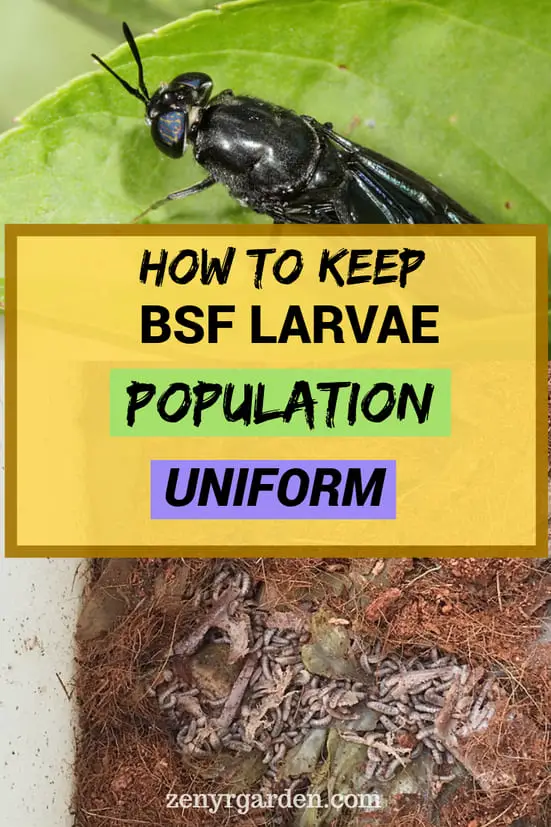To keep a BSF colony uniform, you can build a similar sort of hatchling rack. It has 6 levels, each carrying one hatchling container...
On top are the eggies. What you can do is move the top 6th level hatchling container down and replace it with a new one every day (or every 3 days).
For example:
Put eggies collected on Monday on top, hatchling container placed on 6th level. Next day, move the Monday container down to the lowest rack, and put Tuesday collected eggies on and Tuesday container on top level. Wednesday, do the same: move Tuesday container down, put Wednesday container on 6th level. Until you reach Saturday, your lowest rack container (Monday) will now be 5 days old. You can transfer the 5 -day-old larvae to a bigger feeding place. And continue the cycle.
- The frequency of moving the container down determines the uniformity of your young larvae. The more frequent, the more uniform. (E.g. every 12 hours will give more uniformity but you will need 12-level rack. But BSF eggs hatch 3-4 days after. So when starting you can do it every three days. When you have more eggs hatching and it’s been in the cycle for some time, every day frequency is good enough).
- The basic idea is no matter if the eggies collected today have hatched all or partially, we will still move the hatchling container down after the set frequency (e.g. every day). The bus waits for no one. This ensures those larvae in our one container will only be one day old at most (in the one day span, there may be some hatch early or later in the hours of the same day). But this is good enough uniformity. If the Monday larvae don’t hatch on Monday into the Monday box, they can take the next “boat”. Monday larvae can hatch on Tuesday, Wednesday, Thursday, but still if they fall into any container on that day like the rest of the larvae, they will still only be one day old.
- You can leave eggies on for a week, to make sure they have hatched and then collect them. Eggies placed on rack Monday this week can be collected and cleaned Monday next week. You can tie color strings around the eggies to mark the day (Monday, yellow strings. Tuesday, red strings etc.)
This ensures uniformity.
Moving to the 5-day-old larvae, you know what to do (feeding them in the previous email). One reason I notice larvae grow uneven sizes could be because of feed/population distribution. Some larvae get more, some larvae get less. With the feeding way you’ve read before, they will be happy with the space and food.
>> Thanks to a regular reader for this question.
Responses to Readers' Questions
Bsf lrva e are crawling out of contanier what ever i do, the density is also low, what to do
--> Hi, thanks for your question. Did you check the moisture, heat and feed inside?
Hi, my many grams of 5days old larvae should be in a container of 60x40x20cm and the quantity of substrate to be used.
--> Hi, thanks for your question. According to the materials from eawag research center, as a rule of thumb: 10000 5-day-old larvae (about 12 grams) in one 60 x 40 x 17 cm container, feeding on 15kg of wet waste (75% water) for 12 days. It is recommended to feed them three times: day one, day five and day eight. So the food does not pile up too thick at once. About 5cm or less of food thickness is good. If you have any more questions, please just ask anytime. I hope this helps & See you again next time!
Share or pin this post!

- Cover image adapted from: Black Soldier Fly Bio-waste Processing
- Pin cover image: (1), (2)

